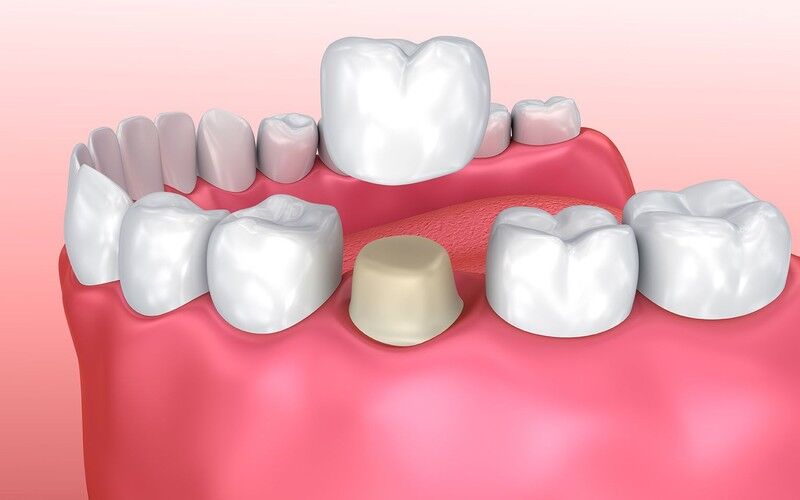A dental tooth crown is a capping that is used to cover a damaged tooth. It adds protection and restoration by filling the gap left by the damaged tooth. They are used for a number of conditions including large cavities, root canal, chipped or cracked teeth. A crown is usually produced using a mould of the existing structure of the specific tooth. The cap (or crown) is usually cemented onto the top of the remaining tooth structure, hence it’s named crown (since it sits on top of the existing tooth)
There are a number of conditions that would require a tooth crown. One of the most common ones is after losing a tooth or having root canal treatment, a crown is used to sit on top of the newly inserted artificial root and completes a replacement artificial tooth. A chipped or cracked tooth also requires a crown, the crown will cover the missing section of a tooth and provide extra strength to prevent further damage. Other reasons include replacing a filling when there is more filling than tooth, covering over a discolored tooth, or to enable inserting a bridge.
There are two major benefits from tooth crowns, dental health and cosmetic appearance. If you have damage to your back teeth you will require a crown to help prevent further damage, if a chipped or cracked tooth is left without repair, it is likely to sustain further damage and is susceptible to decay in the cavities left by the damage.
Unlike your back teeth, when chewing your front teeth are not usually strained with large amounts of pressure, but are the ones that are used in your smile. Therefore chips, cracks or root canal can look rather unsightly on your front teeth. Usually crowns are used on front teeth to make that smile on your face as complete as it can be. Hence, front crowns should always be colour matched to your other teeth.
